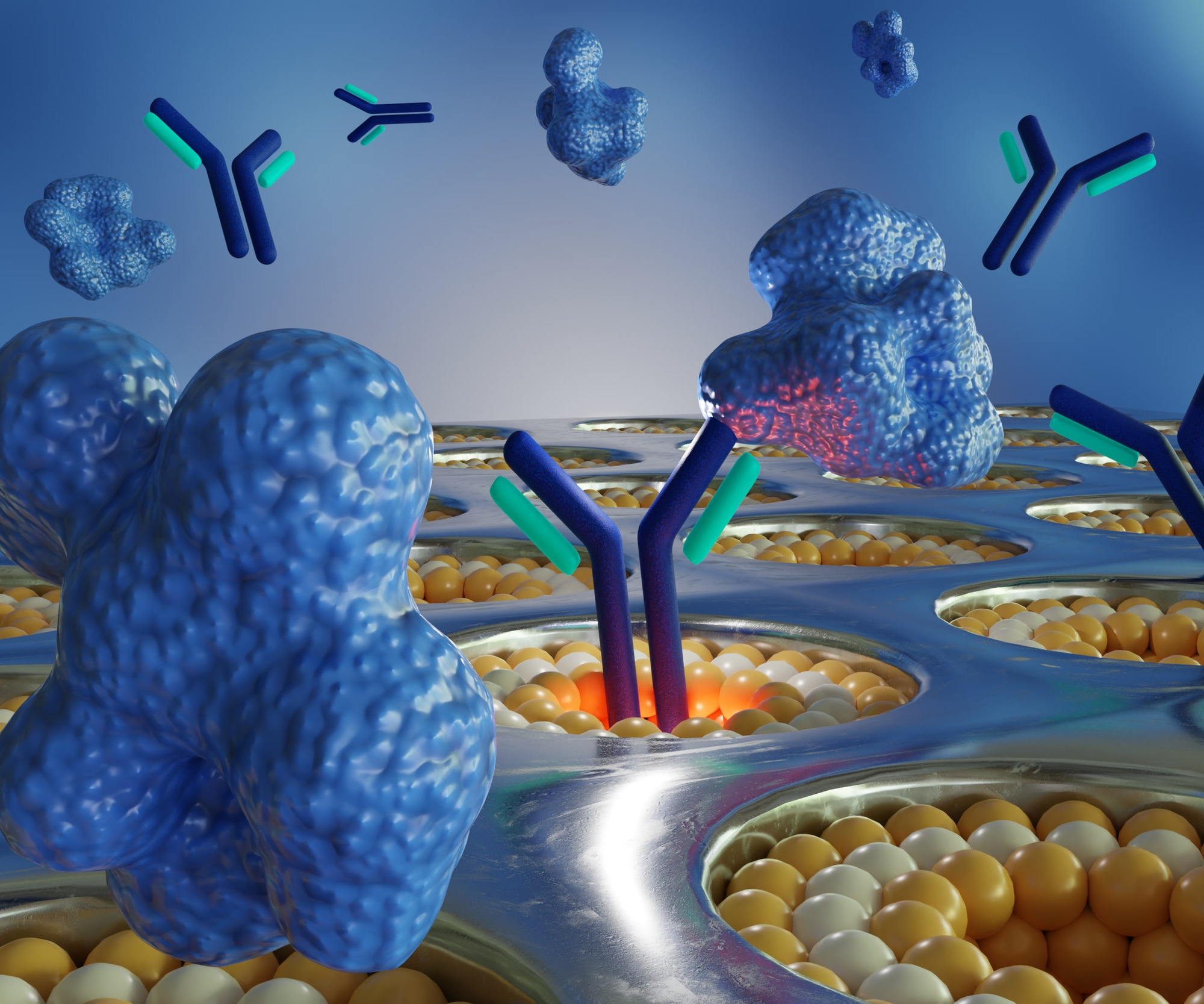By PD Dr. Arno Kromminga & Dr. Daniel Worms
All therapeutic proteins have the potential to induce an immune response that can lead to the formation of anti-drug antibodies (ADAs). ADAs must be thoroughly evaluated as they may impact the drug’s clinical efficacy and safety, but navigating the landscape of immunogenicity assessment for antibody-mediated immune responses can be challenging. There are a number of considerations and risks to take into account when choosing an effective strategy that utilizes the optimal technology and approach needed to avoid the potentially dangerous consequences of unwanted immunogenicity.
In our recent webinar, we addressed how a tiered approach and use of the Biacore™ T200 SPR System can support effective assessment of unwanted immunogenicity by overcoming the major challenges that are often encountered in these tests, and in turn, help accelerate the development and validation of bioanalytical assays for pivotal drug candidates.
What Are the Causes & Consequences of Unwanted Immunogenicity?
Drug-induced immune response can cause patients to experience a wide range of side effects, from minor to life-threatening. The consequences of unwanted immunogenicity often culminate on the bioanalytical level as altered PK/PD causing decreased or increased drug exposure, hypersensitivity via anaphylactic or anaphylactoid reactions, and/or neutralizing antibodies that reduce drug efficacy or neutralize endogenous counterparts.
However, pinpointing the origins of these consequences can be difficult since they can be caused by a number of variations in structural properties, treatment plan, manufacturing processes, and biology of a patient or disease. For instance, sequence variations, genetic backgrounds, pre-existing antibodies, and storage conditions are just a few of the many factors that can contribute to unwanted immunogenicity.
What Makes Biacore™ T200 a Strong Platform for Immunogenicity Studies?
Choosing the right technology for immunogenicity assessment can be just as complex as the factors that go into measuring it. While ligand binding technologies like ELISA or ECL are often used to detect immune responses with high sensitivity, they are not the optimal platform to use when characterizing factors like antibody isotypes, which may be important for the interpretation of the clinical consequences of unwanted immunogenicity. That is when it is important to consider other platforms, like the Biacore™ T200 SPR System, which allows real-time, label-free detection of biomolecular interactions using surface plasmon resonance (SPR) technology.
Biacore is able to analyze and characterize ADAs and molecular interactions related to kinetics, specificity, and concentration with exceptional specificity. The use of SPR, which reacts to changes in the concentration of molecules at the sensor surface as molecules bind to or detach from the surface, generates a wealth of data from an interaction, such as whether the interacting partner binds to the target molecule; the extent an interacting partner cross-reacts with other molecules; how much of a given molecule is present and active; the rates of association and dissociation; and the strength of the binding. Unlike most immunoassays, Biacore is also able to detect low-affinity ADAs that may mature into higher affinity ADAs over time: an important capability for early detection of immune responses that could impact patient safety.
How Does Biacore Work with a Tiered Approach?
Of course, this powerful platform is only optimal if used with the correct approach. Should a strategy omit or use any critical processes, assessments, or assays in the wrong order or at the wrong time, immunogenicity testing results could be skewed. That is why we recommend using a tiered approach for antibody response assessments with the Biacore™ T200 SPR System. In our tiered approach, we advise three main components: a screening assay, confirmatory assay, and characterization.
The screening assay, which is used to validate the ADA assay, should distinguish between positive and negative samples with a 5% false positive rate allowed. First, cut point(s) must be established to secure the statistical threshold that is needed to distinguish positive/negative samples. Next, the sensitivity and drug tolerance need to be determined. They should have a limit of detection of ~100 ng/mL in the presence of therapeutic protein at trough levels, but, depending on the risk associated with the therapeutic protein, a lower sensitivity might be acceptable. The specificity and selectivity are then established, which is done in the presence of other sample components in order to exclusively detect the target analyte. Variability should be assessed within and between assay runs before the robustness and stability are declared. Collectively, these components allow the detection of high- and low-affinity ADAs.
The confirmatory assay, which is essentially a drug depletion assay, confirms immune responses in the positive results from the screening assay and excludes the false positive samples: adding excess of drug to the sample inhibits the response observed during screening and confirms that the response derives from specific binding to the drug.
Once positive samples are finalized, further characterization then needs to be conducted. This includes assays that investigate titration, isotyping, binding stability, and neutralizing activity. These measurements enable continued monitoring of ADA maturation, and consequently, provide overarching insight into the immunogenicity of a given therapeutic product.
—
Thank you again to all of you who joined us for the live session and asked questions. Feel free to reach out to us directly with any additional inquiries about immunogenicity, Biacore, and BioAgilytix’s related capabilities.
Download the On-Demand Webinar
To access the full recording of the live webinar and Q&A session, click here.
